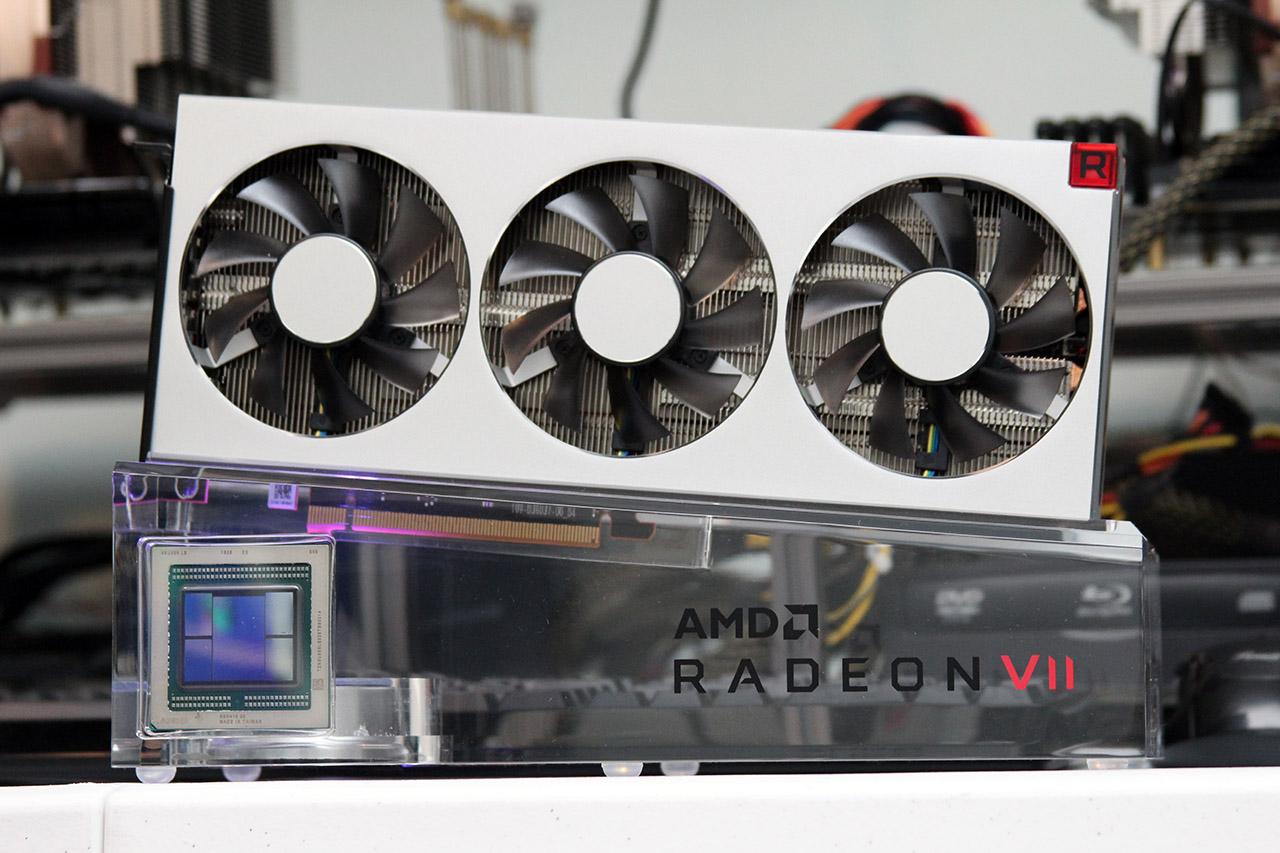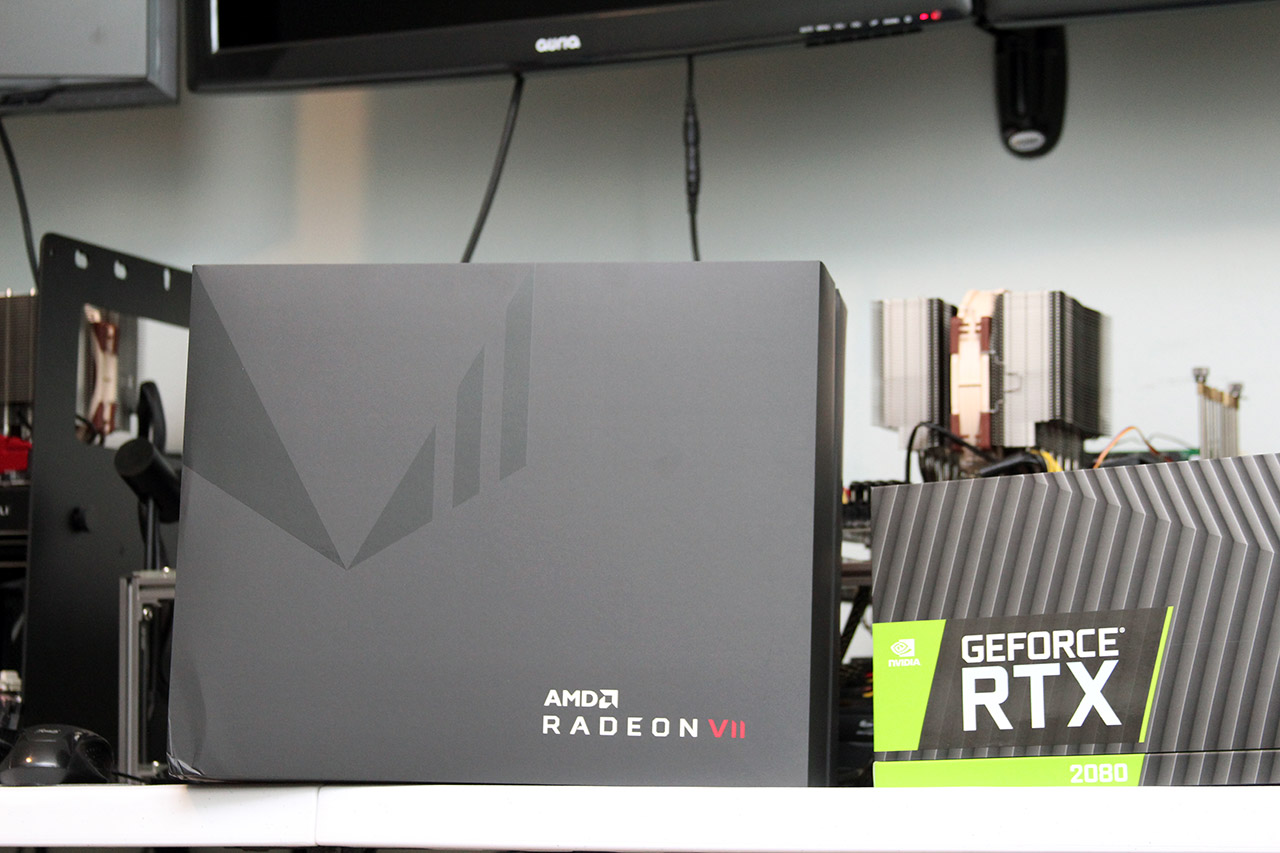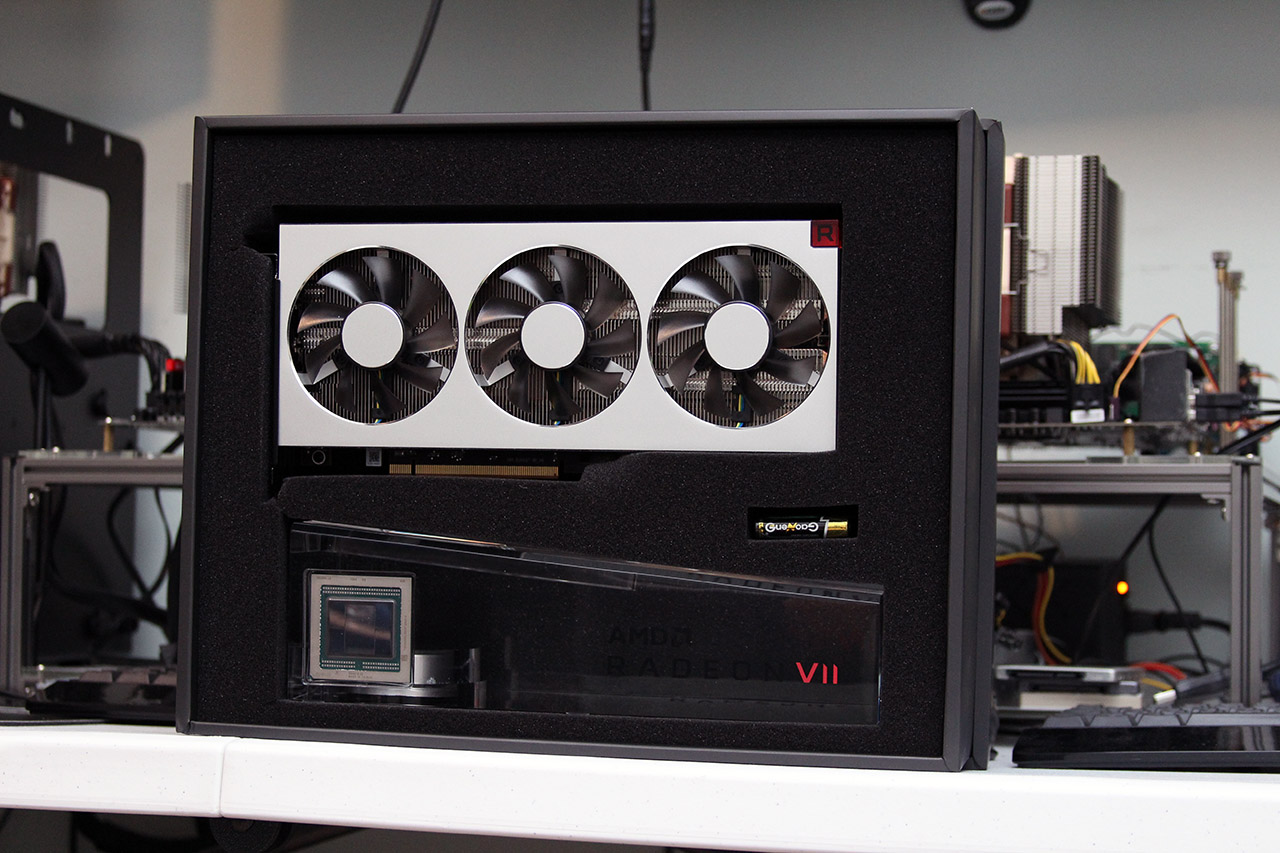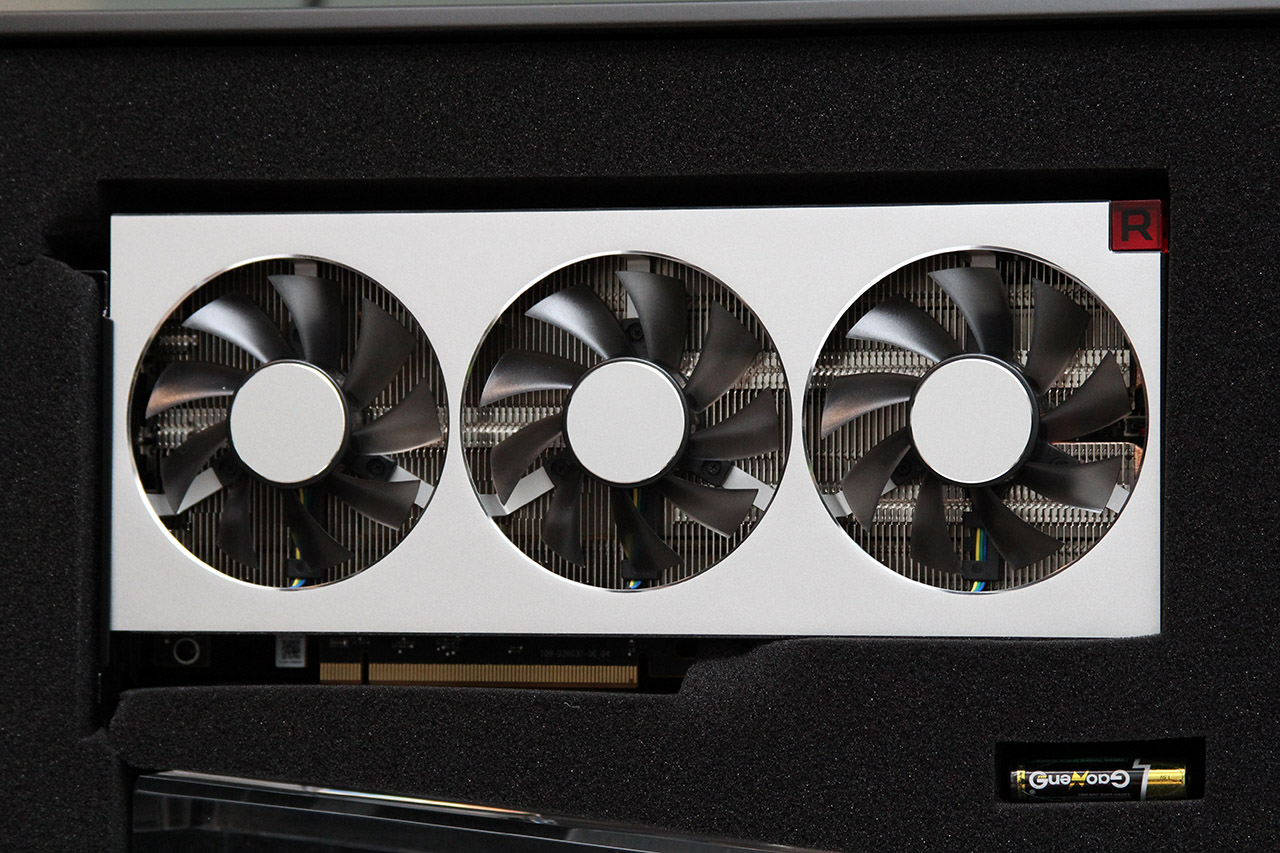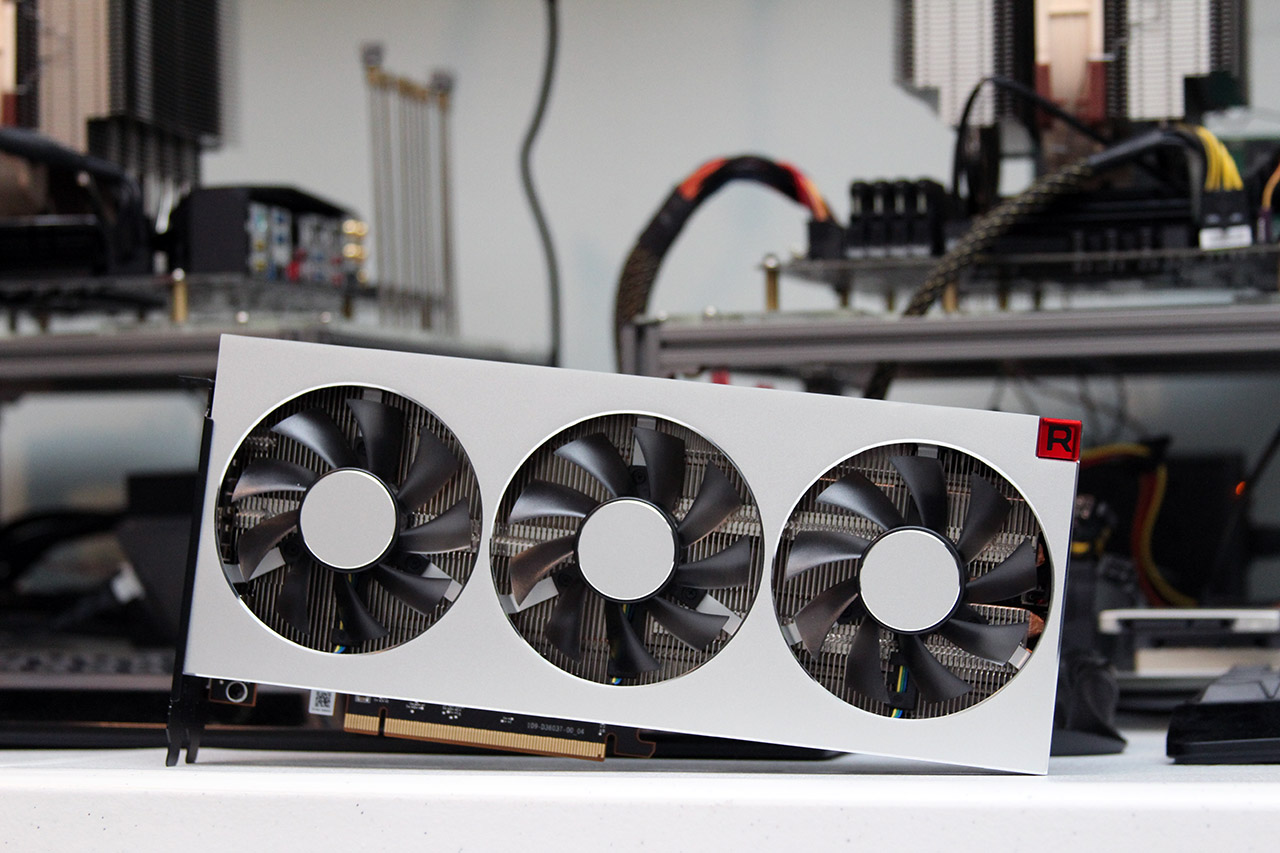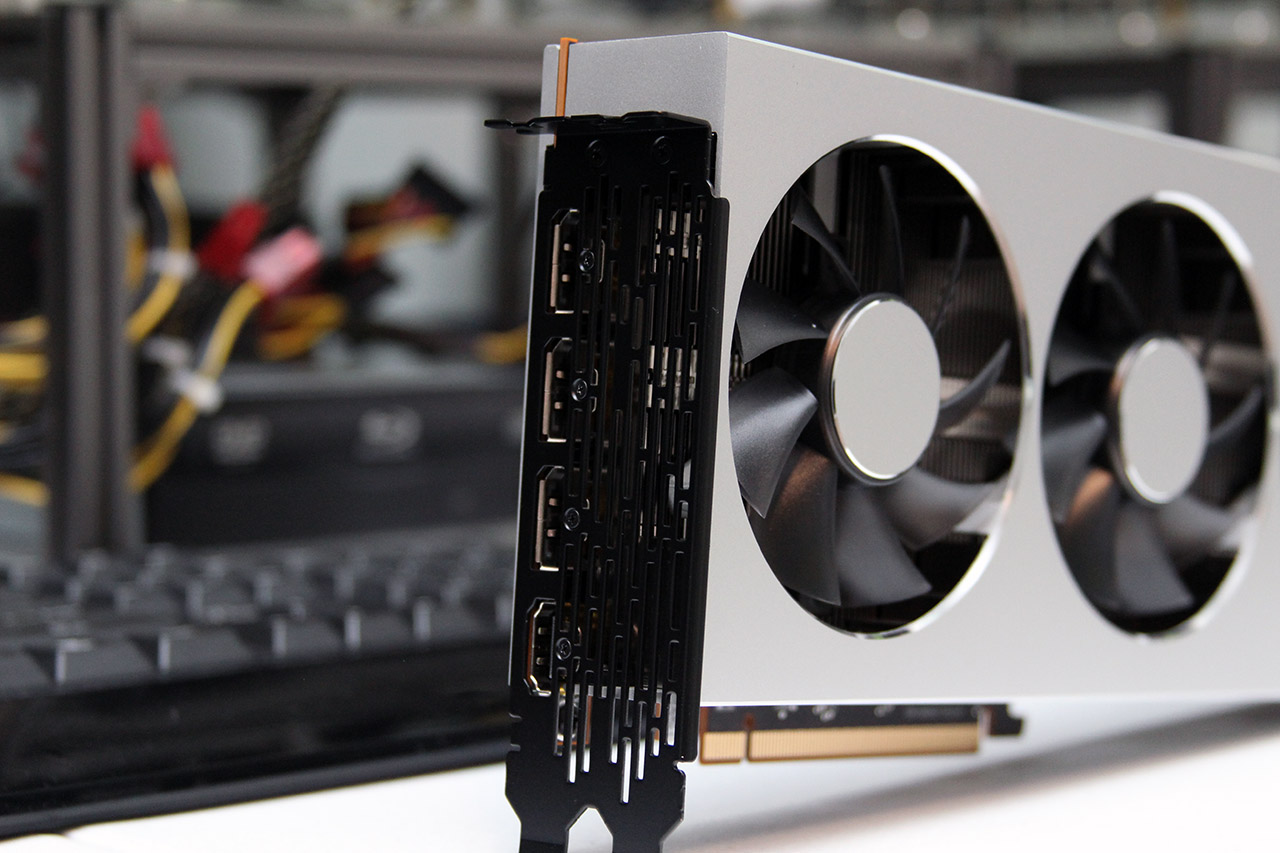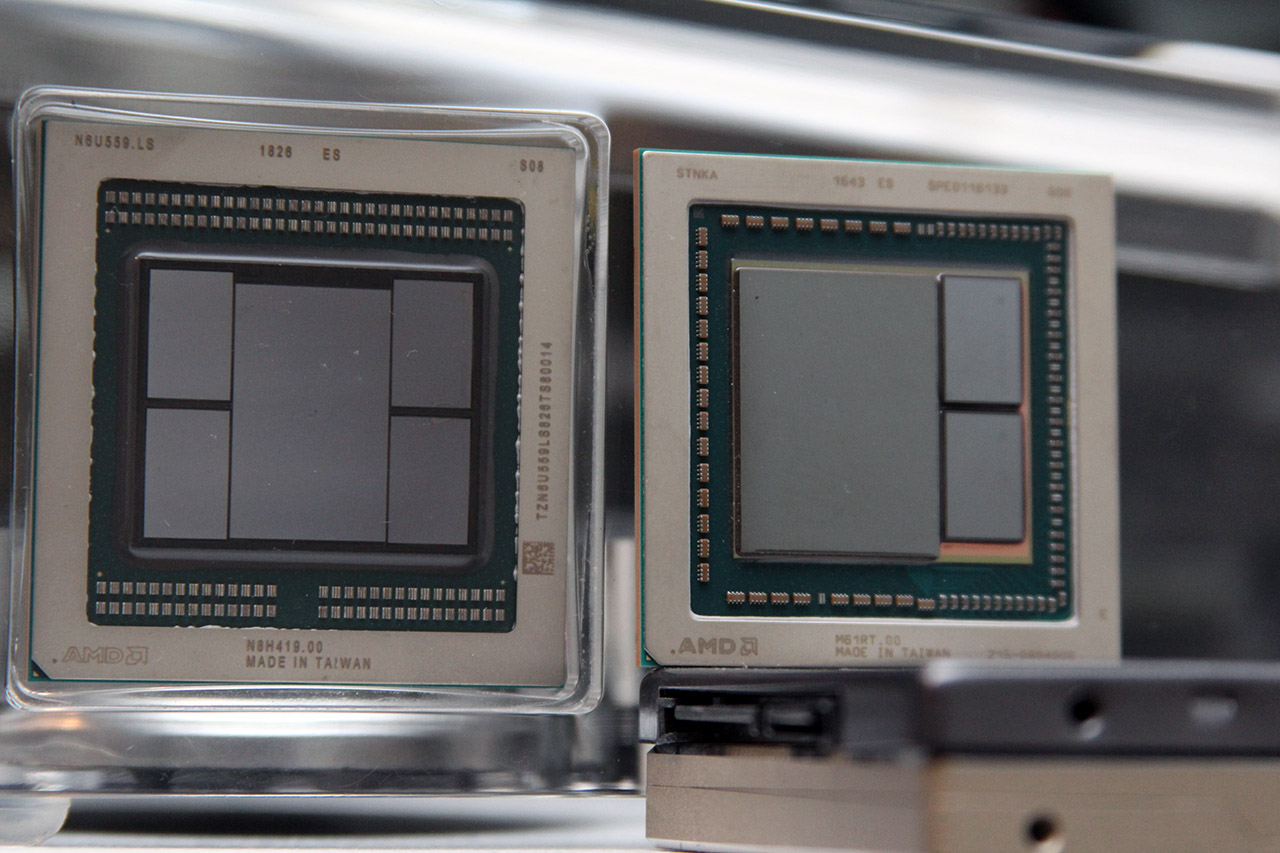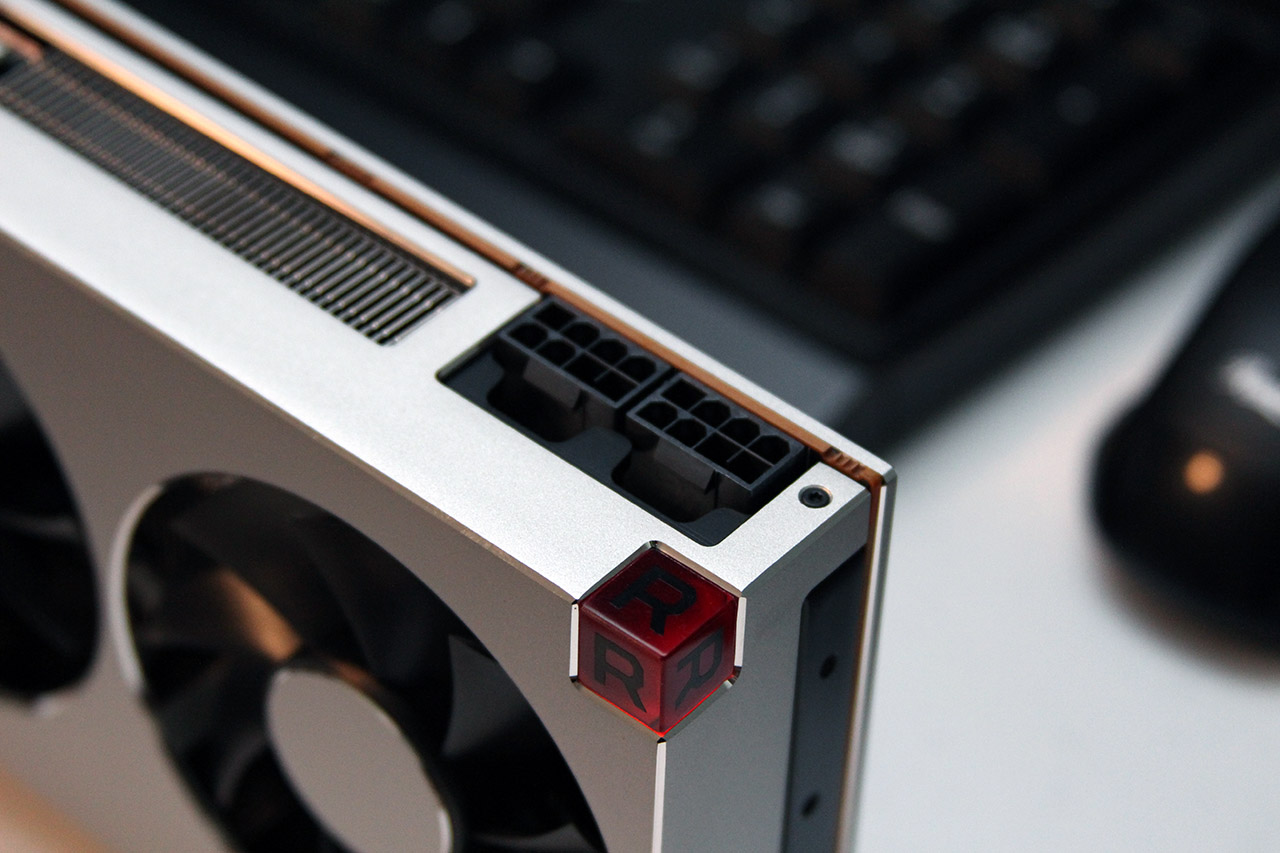Unboxing AMD's Radeon VII: A Sneak Peek At Vega 20
AMD Embarks On A Quest To Usurp GeForce RTX 2080
What you’re about to see is a prelude to our Radeon VII review. The card you’re looking at now is already busy on our test bench demonstrating its mettle. Radeon VII is fast. Radeon VII is loud. But more than anything, sitting on that acrylic custom-made pedestal with an inlaid 331 mm² die and 16GB of HBM2, plus RGB back-lighting, Radeon VII is art.
Box Envy
Our Radeon VII press sample showed up in a big, black box. It was a little banged up from its journey, but the contents inside were pristine.
For a sense of context, Nvidia’s GeForce RTX 2080 Founders Edition stands its ground right next to the newcomer. The stage is set for a battle of epic proportions.
Open Sesame
With the box top removed, Radeon VII is suspended in foam, protected by an anti-static bag. Under it, there’s an acrylic stand with AMD’s branding, an embedded package with Vega 20 and 16GB of HBM2, and a base sporting RGB lighting. Bundled batteries keep the lights going while Radeon VII is on display.
Unbagged
This is what the card looks like outside of its protective bag. Now that Nvidia’s reference design employs axial fans, it’s open season for AMD to kick waste heat back into your chassis as well. The flip side should be a more effective thermal solution.
Up Close and Personal
Radeon VII’s exterior is simple, yet clean. Whereas 2015’s Radeon R9 Fury X used a closed-loop liquid cooler to rid itself of 275W, this 300W board manages in a true dual-slot form factor, surrounded by thick, durable metal. It’s an attractive piece of hardware, to be sure.
Standing on its Own
Much more so than AMD’s own Radeon RX Vega 64 card, the Radeon VII feels solid and sturdy. That little red box on the back of our sample does wobble around a bit. However, clean, angular lines on the back and I/O panel, along with brushed metal surfaces, are definitely more industrial than Vega 64’s plastic enclosure.
Get Tom's Hardware's best news and in-depth reviews, straight to your inbox.
Love to Watch You Leave
Radeon VII’s back side looks like it’s flying by with all of those elongated ventilation holes.
We know those stickers are necessary, but this card sure would look better without them.
I/O for Days
Similar to Radeon RX Vega 64, Radeon VII features three full-sized DisplayPort outputs and one HDMI connector.
An all-black bracket featuring the same elongated vents continues AMD’s theme, though there’s little reason for ventilation back there, given vertically-oriented heat sink fins that push hot air out the top and down toward your motherboard.
An RGB Pit Stop
Before dropping Radeon VII onto our test bench, we allowed it one pit stop on its pedestal with lights ablaze. We’d like to think this would make a good home for AMD’s card post-review, but the proper resting place for a high-end graphics card is in a gaming PC. That’s where it truly belongs.
Just the Two of Us
On the right, we see Vega 10. Manufactured on GlobalFoundries’ 14nm process and flanked by two 4-hi stacks of HBM2, the 486 mm² GPU remains a formidable piece of gaming hardware.
However, Vega 20 promises double-digit performance gains from a 331 mm² die thanks to TSMC’s 7nm manufacturing and four 4-hi stacks of HBM2.
Power to the People
Despite a process shrink, AMD cranks the dial on clock rate, necessitating a 300W board power rating. For that, you need a pair of eight-pin auxiliary connectors.
